Sergey Zonov: “I did the first Spectrum because I was interested”
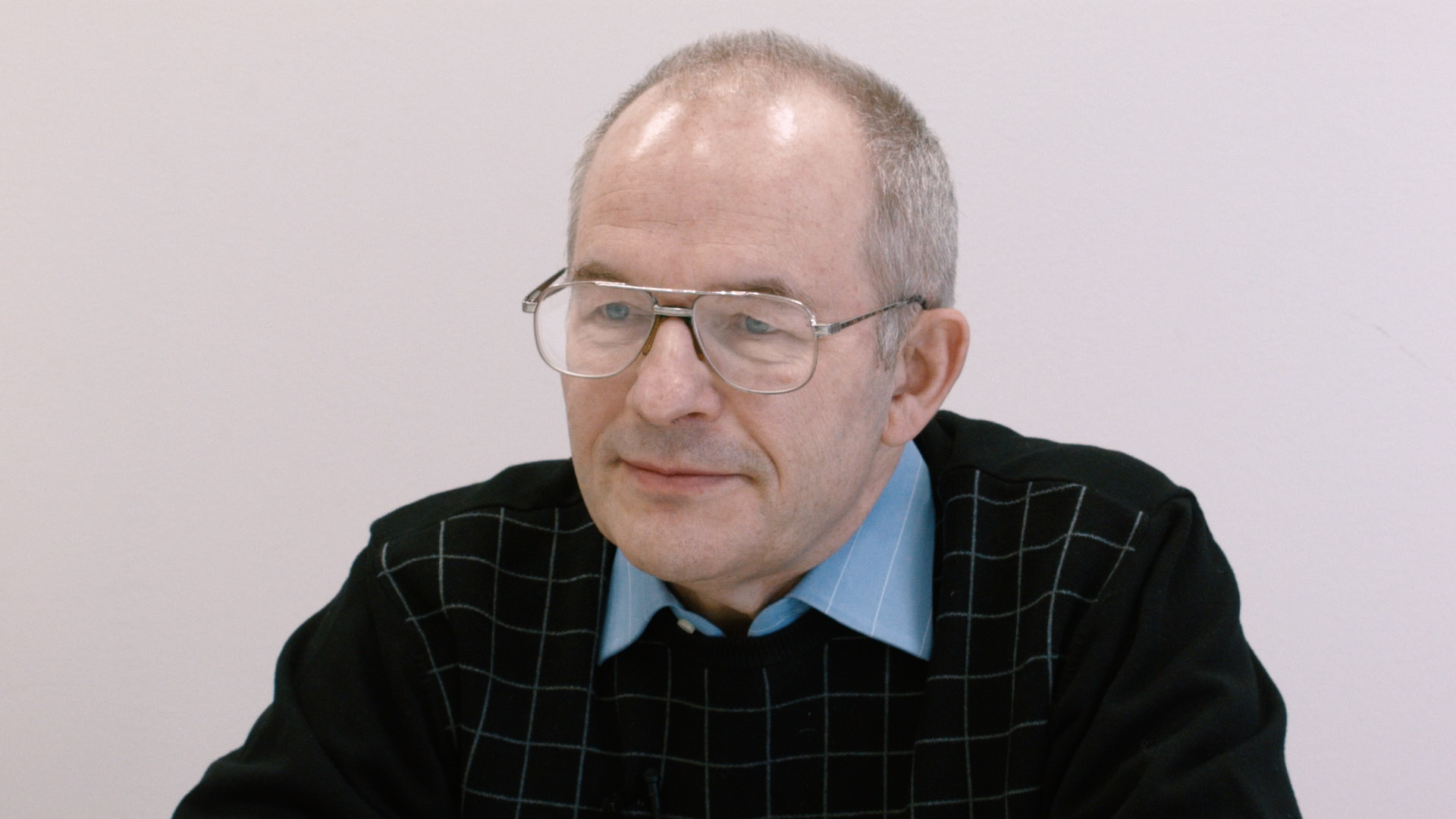
The DataArt Museum has existed for 10 years, we have already presented some exhibits in the form of posters . The collection continues to expand, but now we have decided to supplement her interviews with people who influenced the history of IT. This is the first of a series of historical materials that will be published regularly on our blog.
In the first half of the 1980s, the ZX Spectrum was a popular computer in Europe. When he came to the USSR, local craftsmen began to copy it, process and improve it. One of those who made his version of the Spectrum was Sergei Zonov. According to his schemes collected tens of thousands of computers.
')
Start
It all started when I was in fifth grade. Then I was literally interested in everything, went to the aircraft model circle, somewhere else. Once my parents slipped to me the book “Radio is simple”, which was popular in those years. It was written in it that, after reading it, you can build a radio. My father and I began to read this book, then I myself began to do this. At some point I look - and the receiver does not build! None of this, the fifth or tenth. It became even more interesting to me.
I also had a friend who lived on the floor below. He and I decided to make an intercom - like spies. Spent the wires, soldered, made the generators to be tapped using Morse code. We had telegraph keys, we knew all the signs. All this was the impetus for further learning.
When the palace of the pioneers was opened near my house - a modern, large one - I joined the radio engineering circle. It was in the city of Kirov, Vyatka province, where I was born. An excellent teacher, a fan of his business, taught us Morse code, he had an amateur radio station. Those who had already achieved some results in Morzian could be aired, contacted by foreign radio stations. The next stage is participation in radio communications competitions. So gradually we developed.

The Palace of Pioneers Memorial, opened in Kirov in 1974, was also conceived as a monument to the Kirovsk citizens who died during the war.
Radio amateur
First, in 1974–75, I was a radio observer. My task was to listen to the broadcast and record that, say, a radio amateur with such a call sign from England contacted at such and such a time with a radio amateur such and such from Australia, and send them a card by mail. It says that "you have established a connection at this and that time with this and that." If he confirms his records, sends his beautiful card in response. The process of collecting cards was also very interesting.
Radio observers could not go on the air - they only listened. The next stage is to have your radio station, to build, in addition to the radio receiver, a radio transmitter, to register at the DOSAAF club. After that, you could go on the air yourself, contact any country. The further it is, the more valuable it is. Because then the technique was not at all the same as it is now. The very fact of establishing contact with some correspondent was an unusual event.
Competitions were held. It was necessary in a short time, say, for a day, to establish as many connections as possible. “Hello!” - “Hello!” - “I confirm?” - “I confirm!” Everything, contact has been established with such and such a country: Czechoslovakia, Germany, America ...
There were a lot of such competitions almost every week. Our collective radio station in the palace of the pioneers participated in them, and I became one of its leading operators. Sometimes I worked for two days without sleep and rest. 48 hours without stopping! My head was buzzing.
When I became interested in radio sports, I started driving to competitions, introducing the Kirov region in them. Fulfilled the first adult level, became the champion of the region. Competitions were different levels. First - the primacy of the city, then they took me to some zonal stage. Before going to college, I, having passed the final exams at school, immediately flew to Omsk. I returned from there, I spent the day at home and went to Leningrad to enter.
Library and nightingale
In the sixth class, instead of school, I began to go to the library reading room. He took the file of Radio magazine for 1950, for 1951, 1952 ... The librarian said that I did not have classes at school today. I clearly remember that I missed school this way several times - it was so interesting to me. I read everything. I wanted to know about it, and about that. When the school asked where I was missing, I had to write something. I spent the whole day in the library, because there was nowhere to get more information. I myself began to write magazines of the year from 1974, but I also wanted to read what was published before.
Then I did not build plans for the future and set concrete practical tasks for myself. Let's say make an electronic key, or something else. In the palace of the pioneers, the teacher once offered to make an electronic nightingale. As a result, I got a big wooden box. Inside - a bunch of transistors. Each transistor is an ordinary trigger. It was necessary to solder them 30 pieces, they switched in the right sequence at a certain frequency and formed sound signals that imitated the nightingale's trill. I did this thing for half a year or a year. She visited the exhibition of the best works, something even won.
Student
Class in the eighth, I decided that in the future I want to do radio engineering. Who will be specifically, did not think. When graduating from the tenth grade, the only question that remained was which institute to choose. I thought that in Moscow it was difficult for a person from the provinces to enter, and you could probably go to Leningrad - there should be enough strength. On a vacation, I visited Leningrad, went to an open day at the Bonch-Bruyevich Electrotechnical Institute of Communications. I chose it from the picture in the directory. The LETI building seemed to me somehow unattractive, I did not like it. Bonch had it more solid, it predetermined my choice.
At the open door I liked everything, and more I did not think where to go. In the summer I went to Leningrad and went to the selection committee. I submit the documents, and they say to me: “We do not take foreign people”. The next day, I came back and demanded: “Where does it say from you that you do not take non-residents?” They were forced to accept documents, but my condition was nervous. I thought that at the very first exam they would be overwhelmed, since the insolent one came. But I had a good preparation, I knew the subject. Received the "top five" and eventually entered.
At the institute, of course, they teach a lot of things that an enthusiastic student does not need. Now I tell everyone: the easier it is to learn, the better. All these compulsory lectures and tests only hinder free perception of information and more deep study of the subjects that you really need. But I also had a radio sport, DOSAAF. At the competitions I represented the institute, I had some kind of indulgence - they allowed me, for example, to take the exams ahead of time. I did not go to many lectures, then took notes from other students, studied them for five days, and at the same time corrected their mistakes. Then he took the exam, got the top five and left.
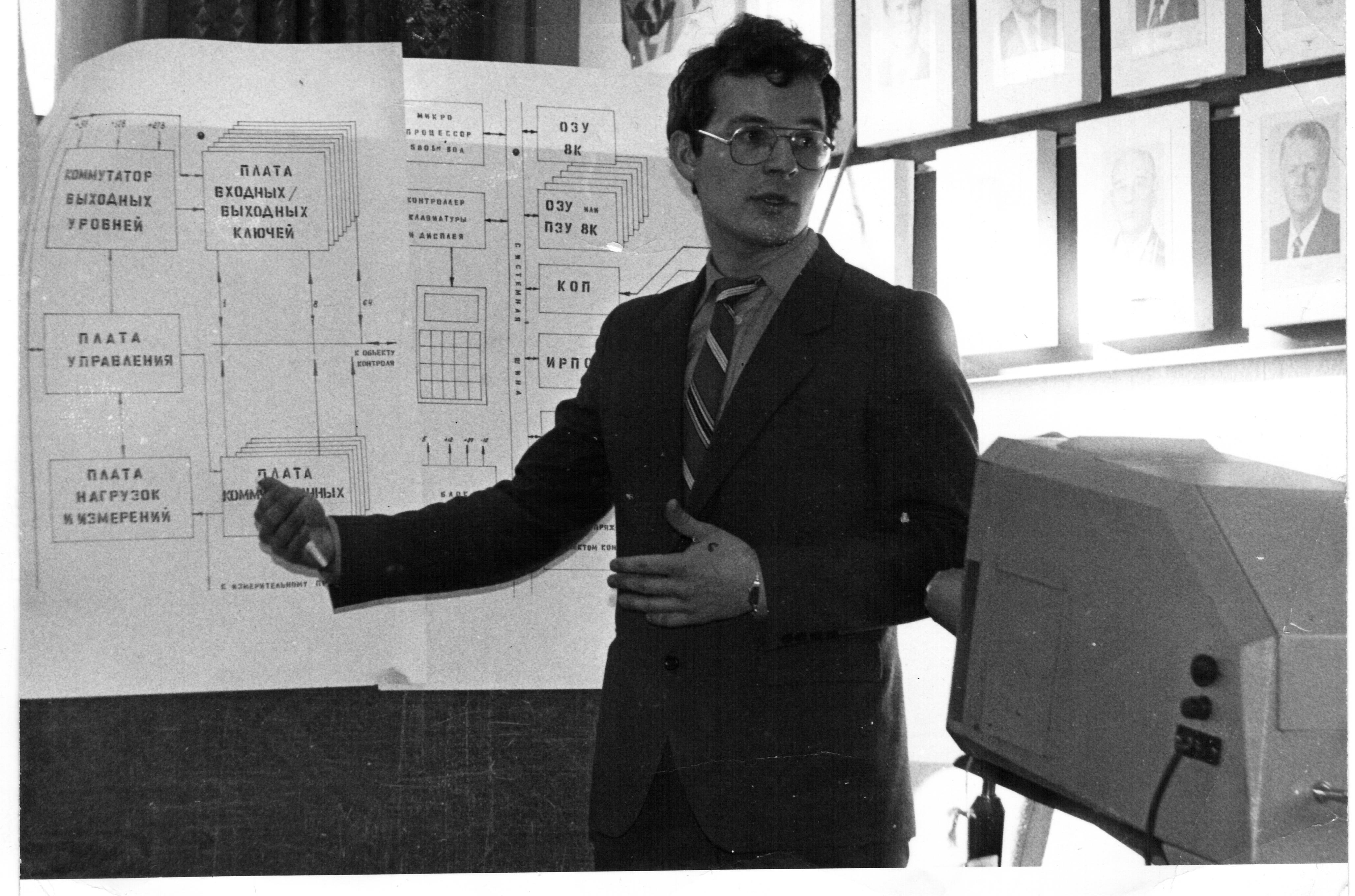
Sergey Zonov on the protection of the diploma.
After living a couple of years in Leningrad, I didn’t want to go back home or go somewhere else to the periphery. At the same time, I knew that in my specialty foreigners are not left here, - they are distributed to other places. I decided to try, all the same - you had to become a better student. Set the task: go to the distribution first. I thought that maybe then there will be a chance to stay in Leningrad. This is what happened.
Engineer
Bonch, I graduated in 1982. As planned, the distribution commission came first. It turned out that there is a place at the Kozitsky factory, they were given a hostel there. In my situation - just a dream. The plant at that time had a civilian part of the production (the production of Raduga TV sets) and work for the military-industrial complex. I got into the TV production design office on Maliy Prospekt. He mastered the profession well, but the level of other engineers turned out to be very low. Out of 20 people, only one could learn something.
According to the plan, we developed some devices. For 1982–83, the task was to make a robotic line, which itself would take parts from cassettes, arrange them and solder. At that level of development of technology, it was impossible to do this, but everyone pretended that they were working, studying the potential.
I worked at Kozitsky on documents until 1994, and in fact - until 1991. In recent years, managers have given me a free schedule. They appreciated me, and it was important for them that the work was done, and where it was happening - it did not matter. Therefore, I gradually moved to work at home. I was sorry for spending three hours a day on the way. Well, when children came, it was no different.
I had a desk in the kitchen at home. It was made by a friend who worked for Kozitsky. A man without higher education, but a hard worker - he overfulfilled the plan by 500%. They approach him: “What are you doing? We will lower prices tomorrow. " “And I have a family,” replies, “and alimony. I have to earn 500 rubles. ” This is at an average salary of 120-130.
The table was made to my size, from aluminum profiles. He still stands by me. On the shelves is all that a true radio amateur should have: an oscilloscope, electronics. Here I collected my first Spectrum.
"Young Technician"
It was almost impossible to buy the necessary radio components in the Leningrad stores, so every Saturday we and our friends went to the flea market to the Yuny Tekhnik shop on Krasnoputilovskaya. Who had the opportunity to hitch something from the factory, was selling here. To whom something was required, bought. The crowd at the “Young Technician” was a huge, the party lasted all Saturday. There you could meet different friends, discuss some technical ideas. Police raids occurred periodically, and the crowd flew away like a flock of birds.

There were four total stores “Young Technician” in Leningrad. The very first, flagship, was located at 55 along Krasnoputilovskaya Street.
It was possible to buy a lot of things from the “Young Technician”, but the question arose: are the parts that you buy intact? Let's say you need a 565RU5 memory chipset. How to check in the field whether they work? And I decided to become an intermediary between sellers and buyers. Created a device into which you insert the microcircuit and in a second it shows whether it is in good condition. It was a difficult thing - about 70 connected circuits. I earned money on it, and very much. The chip set cost 50 rubles, the check is 3 rubles. When he came home, his pockets were sticking out of money.
Spectrum
The first versions of the analog computer in the USSR appeared in 1986-1987. By that moment I knew the microcircuit well. When the information came to me, I was able to digest it and make an option that became very popular.
Schemes "Spectrum" appeared on the flea market, for them and collected. It took about a week. At first turned on - nothing works. Began to watch what is wrong. Somewhere there were errors in the scheme, somewhere - mine. Somewhere the faulty part came across. To understand all this, you had to look at the signals with an oscilloscope. Then analyze the scheme. It turned out that I studied the device to the last screw.
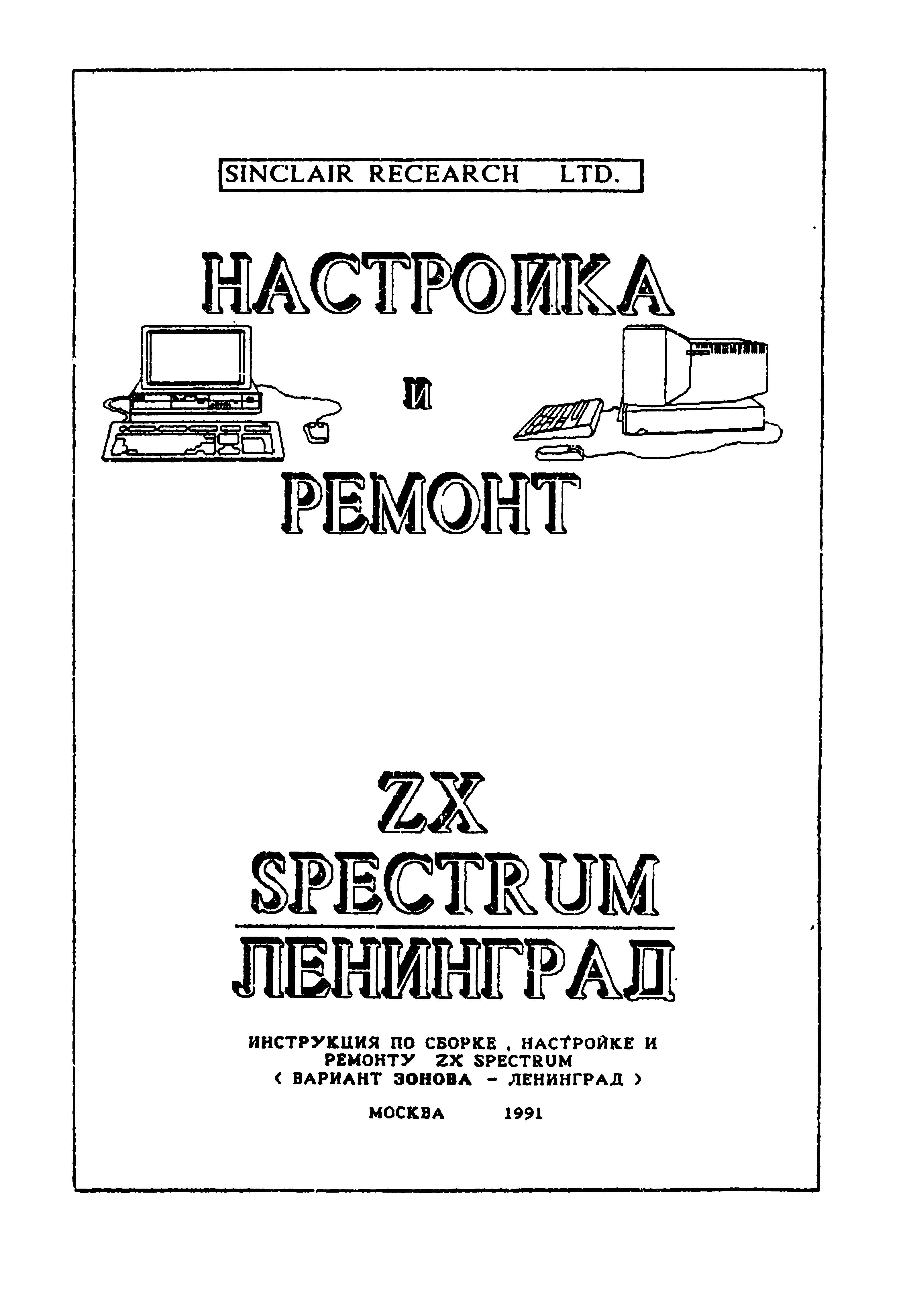
When the computer was assembled and started working, I understood the flaws of its scheme. Plus it was complicated and expensive to manufacture. And I decided to come up with my own version. Made, soldered with thin wires - these are several thousand connections. I remember that my father came to me: “How do you understand these hairs?” And there, on the one hand, the microchips are really inserted into the holes, and on the other, a layer of the thinnest wires. When you need to change something, you tweak them with tweezers. It's like a surgeon in an operation: to get to the right place, you have to cut, move the tissues apart. That's how it used to be.
Repeating this design was very difficult, because a huge amount of work. Only had to solder a week. To organize production is unrealistic - the product would turn out to be very expensive. Although the design offices did something like this during the development phase. And there was a task to do all this in the form of a printed circuit board, so that only the microcircuit inserted, soldered, turned on - and everything works. The device that I first assembled was very difficult in terms of the number of chips - about 70. I began to convert it, modify it. As a result, I made a circuit of 42 microcircuits, and now it was necessary to invent a topology of the tracks that would connect them. That is, on the one hand, there are chips and part of the tracks, on the other - the other part. Such a fee could be produced in series.
I have been doing topology for several months. Drew tracks on a huge sheet of graph paper, rearranged, optimized. Now all this computer does, and then had to manually. The result was some kind of option. Now, in order to produce this fee, we needed a photo pattern that could be given to production. He was made in the laboratory at work according to my sketch. The next task is to find out who will produce. There was no money in the required amount, I could not pay, so I began to look for an exchange. I give this patch to someone on a flea market with the proviso that when you make the boards, you give me 20 of them. Many were deceived, but someone fulfilled their obligations. I had a certain number of boards - up to a hundred, not more. And I could collect several devices in one day.
Making a computer was difficult. The keyboard was assembled from the keys, something was also adapted for the case. I did not earn money that could change something in my life.
Games and not only
What is the Spectrum? First of all, toys. On the productions there were large computers, on which a program was entered from punched cards or magnetic films, and it was possible to play Star Wars. Something like "Sea battle". You tell the computer: "E4", and he moves your figure. And here the first dynamic games appeared. There is a hero, he runs, jumps, jumps. That is, man, though not as beautiful as it is now, all the time in dynamics. And it was very interesting.
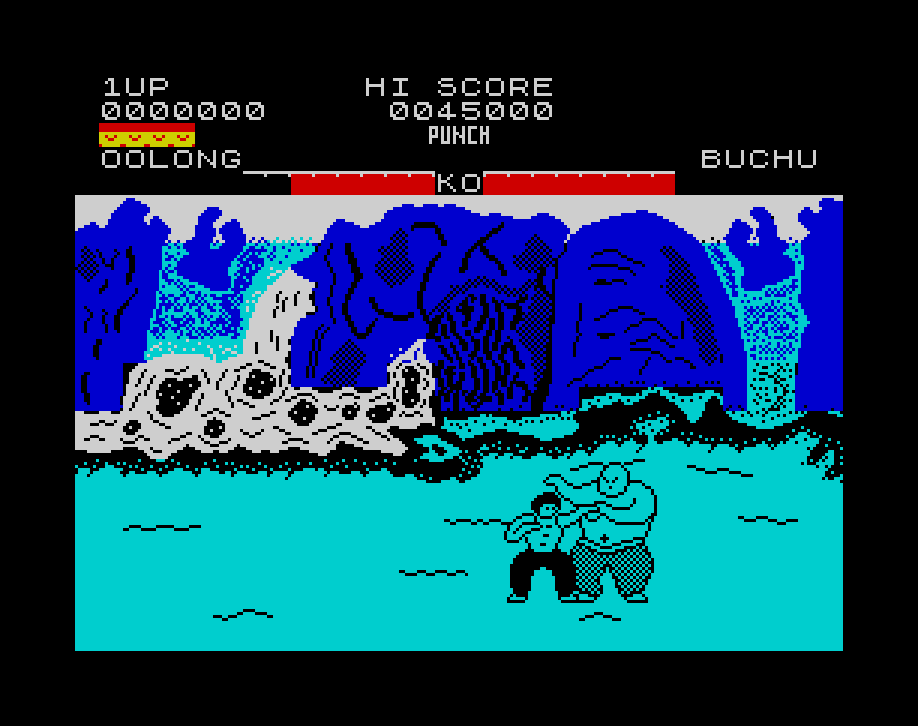
The game Yie Ar Kung-Fu was originally developed for gaming machines, but later ported to a number of consoles and home computers, including the ZX Spectrum.
Programs loaded with cassette tape. You connect a tape recorder to a computer, for about five minutes something snags, then once - the game has started! When it happened for the first time, I jumped to the ceiling.
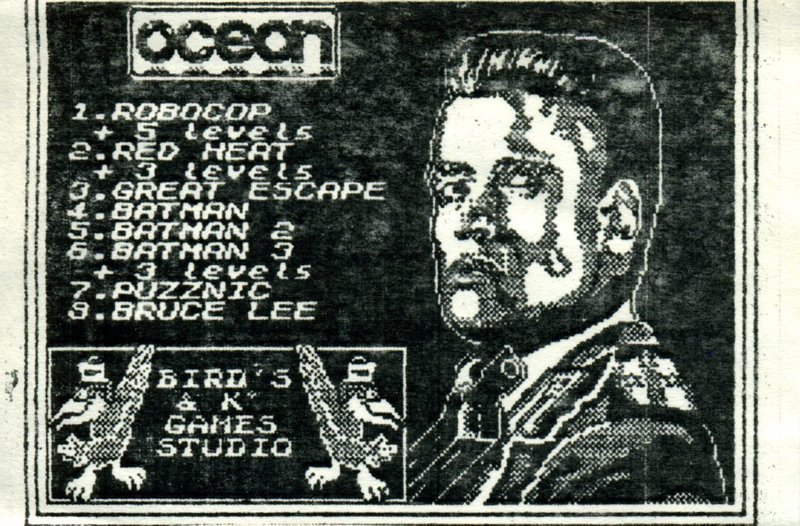
Cover cassette, a collection of games for the ZX Spectrum.
The Spectrum had an 8-bit Z80 processor operating at 4 MHz. Then came the option of turbo - 6 MHz. RAM was 64 KB. That is, all the programs were placed in it. For the work of the "Spectrum" it was necessary to 12 KB. Partially this memory was used for the screen. For programs, 48-49 KB remained. Now any mouse driver takes much more. The screen resolution was 256 points horizontally, 192 - vertically. If now each point has its own color and consists of actually three, there they were in the form of sprites. Sprite is a piece of screen 8 by 8, it seems. And this sprite could prescribe one of the 256 colors. Primary color and background color. Combining primary colors and additional ones, they managed to create such interesting programs.
Someone found this computer a practical application. I had a friend - the navigator TU-134. He counted on the "Spectrum" routes and all the supporting information on them. In the language of BASIC, which could be mastered in one day, he wrote programs: he flew to such and such a point, turned further, and took such azimuth.
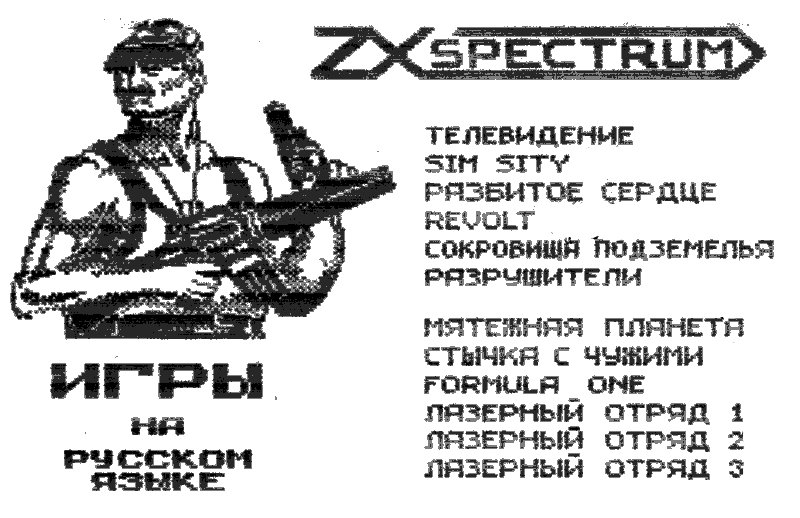
Another cassette cover with games. The second number is Sim City - the very first version of the city simulator.
The brother of this friend wrote music for the synthesizer and also used the computer somehow. Someone was interested in programming, someone wrote application programs. There was at one time the Iskrasoft firm, which was engaged first in software, and then switched to trading in linoleum. I remember that she was doing some business programs on the computer a la Spectrum.
In fact, this is the first computer that has become somehow popular in the USSR. According to my scheme at least tens of thousands of cars assembled. Maybe more than 100 thousand. Many cooperatives were engaged in production. Someone after me was correcting something, giving out for his own, producing, earning money, enlarging his business and then switching to something else. The geography of distribution is the most extensive. When we had our own company, we sold computers even in the hinterland - sent by mail.
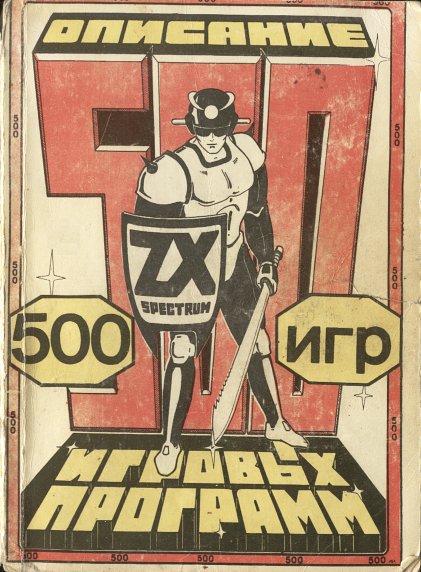
Catalog of games with a description.
The simplest "Spectrum" cost 130 rubles - this is a monthly salary. It was usually bought by people familiar with electronics, because a lot had to be done on its own. Even if you bought a working board, you need to connect it to the TV, to the tape recorder. For a man who never held a soldering iron in his hands, this was problematic. Although someone probably bought a ready-made computer, fully connected.
A great contribution to the development was made by the fact that literature began to appear. The book “How to write a game” was very popular. In Moscow, one company engaged in the release of a printed magazine. It was dedicated to the Spectrum, and information from all directions flowed there. Who did what, who plans what, exchange of experience. They were printed in the printing house, but it was half-published.
"Scorpio"
I did the first Spectrum because it was interesting to me. I wanted to create a device that is optimal in all respects. Basically, I did it. Then, on this basis, I started to make another computer - “Scorpion”. In 1991, created a company, we produced 100–200 pieces per week. There were installers, tuners, debuggers. We sold the computer to many cities. We even had a map on which we ticked off the flags where he was sent. Vladivostok, for example, had a lot of flags.
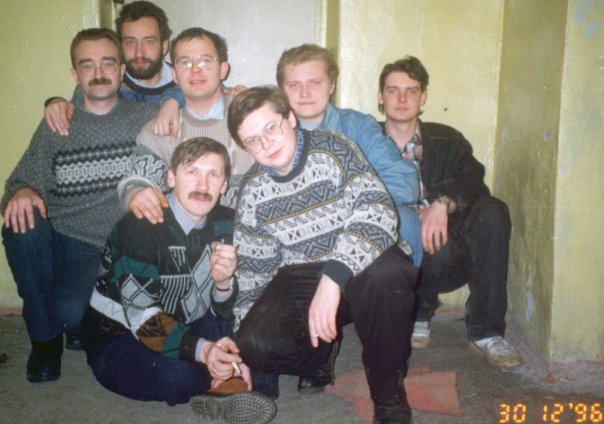
The Scorpion team is preparing for the new 1997 meeting. Sergey Zonov, third left in the top row.
“Scorpio” was interesting for me to develop, because it was completely my brainchild. In order to connect the hard drive to it, I had to invent a special fee, followed by some new ones. Then, much later, I wanted to make a computer in the form of a single chip. I began to develop, invested a lot of money. When the microchip was done, it turned out that something was wrong, the next iteration is needed. After several iterations, I realized that this process was endless - we just couldn’t draw it - and abandoned the idea.
The Scorpion had a zest, called the Shadow Monitor. It was possible to stop the program at any time and delve into it. You play a toy, press a button - and look, study, change. A tool for creativity. There were other developments. Then it was the only computer for creativity that an ordinary person could afford.
Evolution
The peak of the popularity of the Spectrum came in 1988-90. Then the following models began to appear - my "Scorpion", other devices of the same kind. In the second half of the 1990s, a recession began, as computers of a different level arrived, and in our country technology did not allow them to be produced. But requests for fees and some details of the Spectrum still come. People are interested in building a computer from scratch. I understand them. For example, dad wants to teach a child microchip. What is good "Spectrum"? There you can understand how any node works, there are no closed circuits.
There are those who play toys. On an IBM-compatible computer, they run a simulator and a program from Spectrum.
From the flea market at “Junior Technique” the “Juno” market grew. At first it was moved a little further along Krasnoputylovskaya for the move - when the locals were fed up with the crowd in front of their houses. There she existed for five years. People came by cars already, they sold something directly from them. We did it too - we traded computers. I come to the "Niva", open the back door, take out a table, equipment to check computers, board. The year in 1987, this point was moved to where the "Juno" is now. Later the market itself appeared - gangsters, second-hand dealers. The currency was bought-sold. Then it all gradually civilized. In place of the stalls appeared stalls.
A similar flea market was in Moscow - on Gorky Street and also at the "Young Technician" store. If you walk from the center of Tverskaya, on the right, 100 meters from the Belarusian station. There, too, enthusiasts, amateurs, gathered, but the place was less, and they drove more often. Traders migrated somewhere in the courtyards. Its own specifics. I myself went there to buy something when I was not here. Then this flea market gradually transformed into the Mitinsky radio market on the outskirts of Moscow. He is huge and popular.
Many of the people with whom I once started are still connected with computer science and computers. I myself am now the CEO of Scorpio Plus, a company known on the website scorpion.ru . We are engaged in wholesale and retail trade in accessories and service.
I was lucky: I decided early on what I wanted to do, and I enjoy working all my life. Despite all the difficulties that periodically arise, - economic, others - I am interested. I am a happy man.
Source: https://habr.com/ru/post/447508/
All Articles